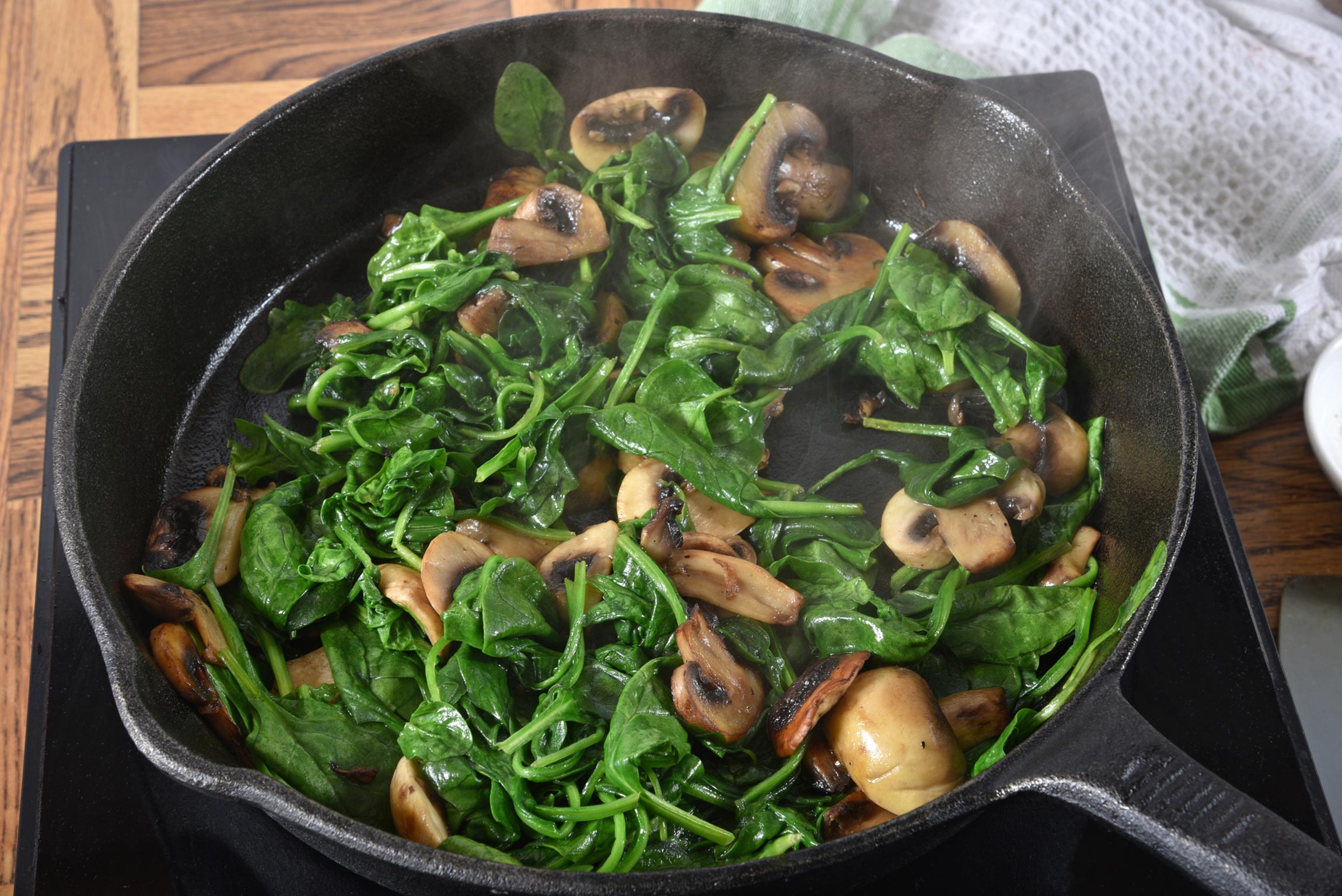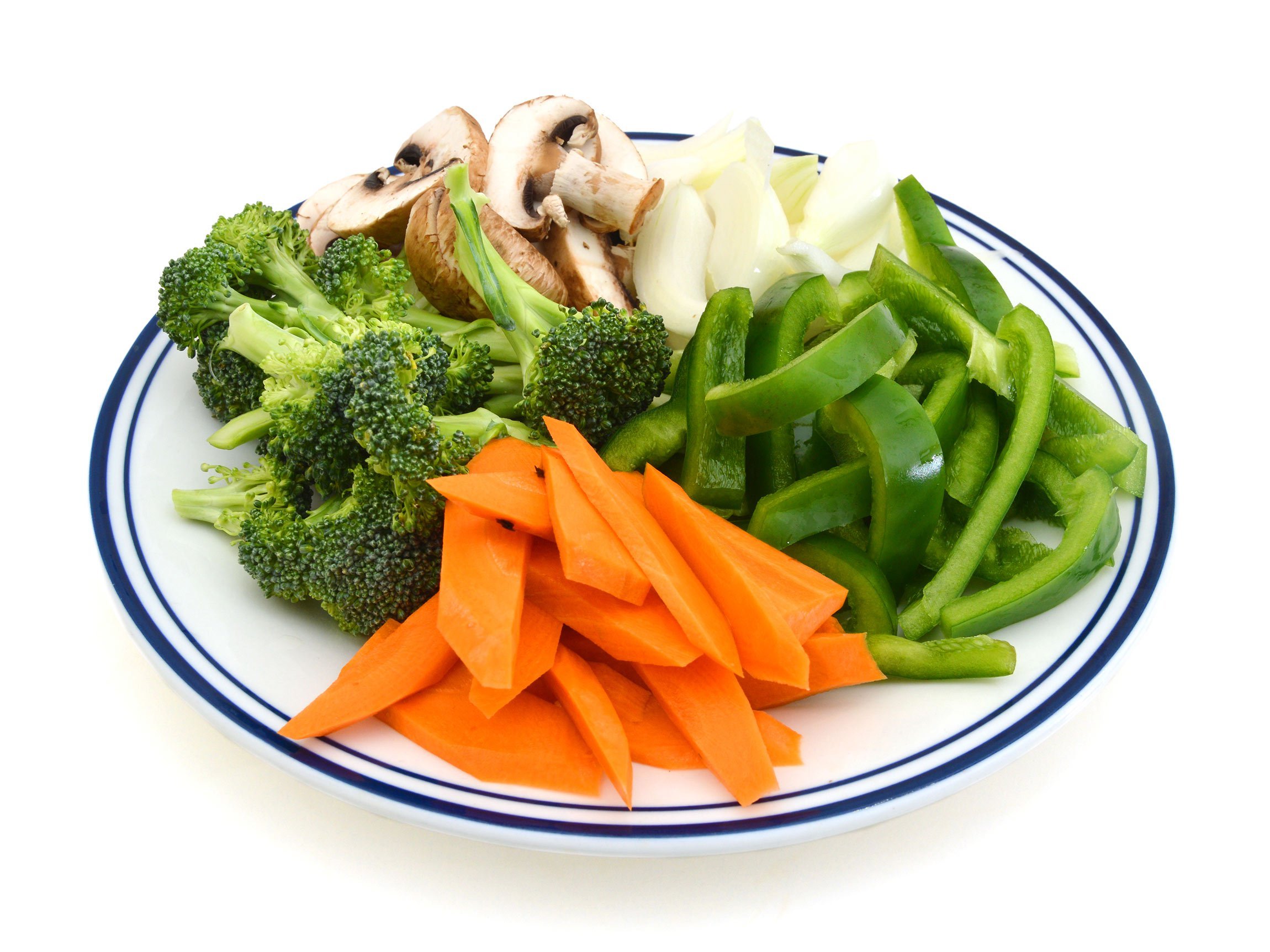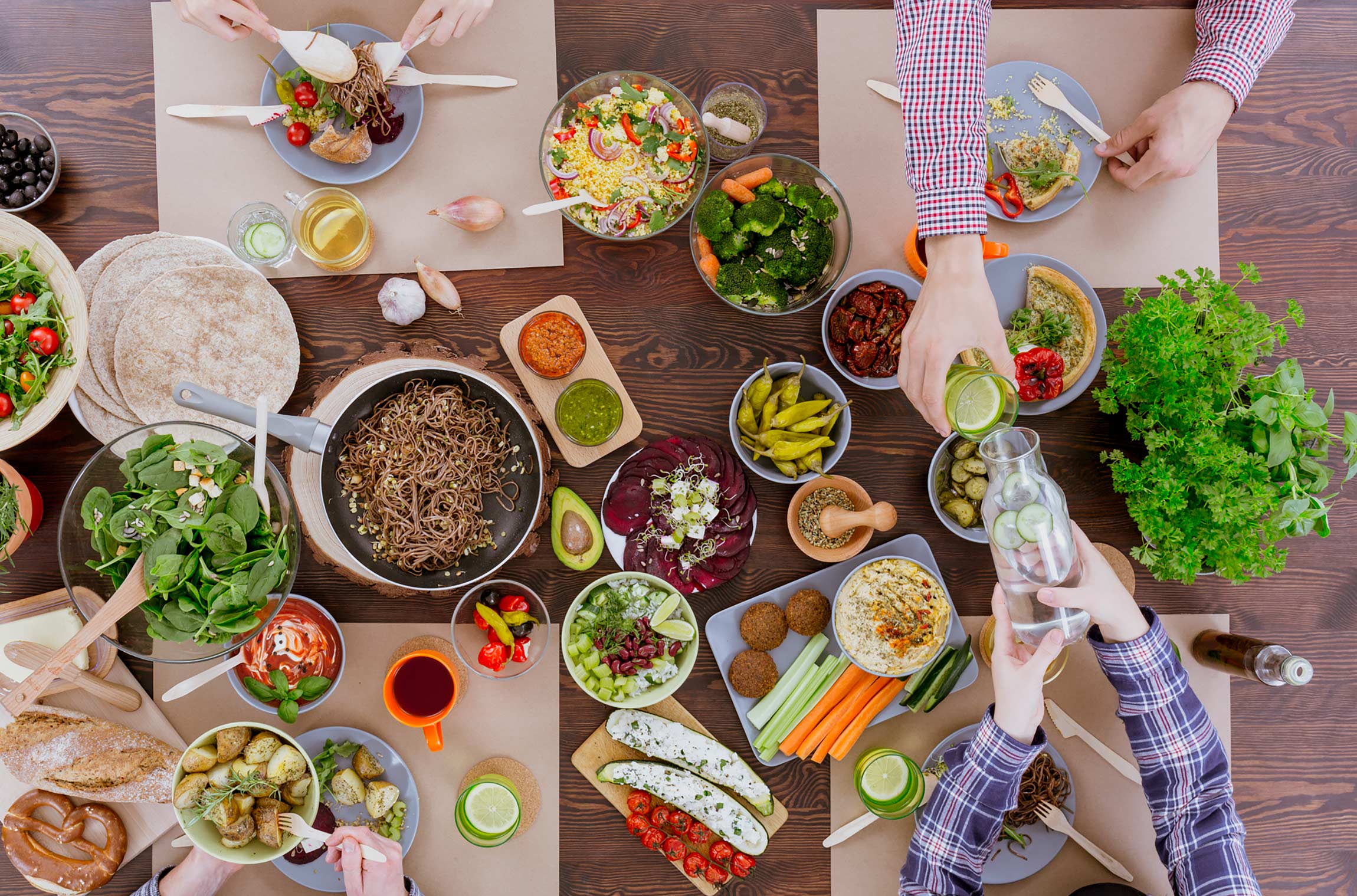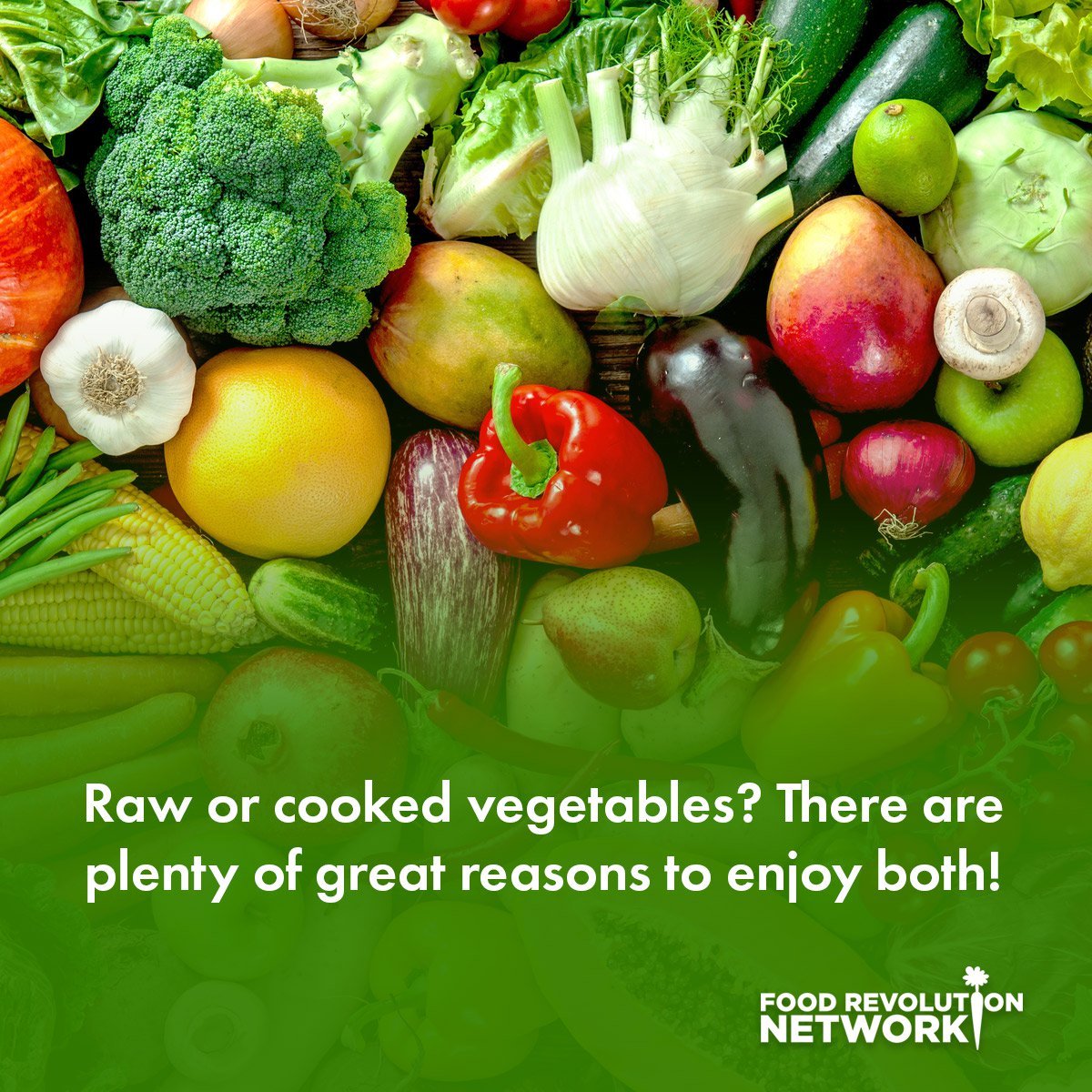When it comes to raw vs cooked vegetables, what are the healthiest ways to eat them to get the most nutrients? Learn what the science and the experts say about the best ways to prepare your veggies to get the most benefits.
Raw diets have been getting a lot of attention. Some people believe eating raw foods means you’re getting more nutrients. Or that cooking food kills the natural enzymes in plants, as well as the vitamins and minerals.
On the other hand, other people say cooked foods are easier on your digestion, are healthier, and sometimes taste better.
So what’s the truth about raw vs cooked vegetables? How should you be eating your veggies to get the most benefits?
Are More Nutrients Always Better?
Raw vegetables often contain more nutrients. So naturally, many people think they’re healthier for you. And, sometimes, that’s true. But the reality is more complex.
When it comes to the good-for-you components of foods, Michael Greger, MD, says: “It’s not what you eat, it’s what you absorb.”
A 2010 study published in the American Journal of Clinical Nutrition found that when women followed either an average Western diet, a wholesome nutrition diet (based on healthy dietary recommendations), or a raw food diet, more nutrients weren’t always better.
For example, participants in the raw food diet group consumed more beta-carotene per day than any other group. But participants in the wholesome nutrition diet group absorbed the most of this critical antioxidant.
When you cook your veggies, you lose some nutrients. But others become more available for your body to use.
Raw vs Cooked: Some of the Benefits of Cooked Vegetables
In addition to apparently supplying you with more absorbable beta-carotene, as mentioned in the study above, cooked veggies give your body more of certain other antioxidants, such as lutein (which is good for your eyes) and lycopene (which helps protect your heart and your bones).
Cooked vegetables can also give you more minerals. Heating releases bound calcium, making more of the mineral available for the body to absorb. And the difference can be significant. Cooked spinach has 245 mg/cup of calcium, while raw spinach only has 30 mg/cup!
Cooking can have other benefits too. A 2009 study published by the Cold Spring Harbor Symposia on Quantitative Biology journal and conducted by Harvard University showed that cooking:
- Aids chewing
- Increases digestibility, and
- Improves the net energy value of foods
Plus, some evidence suggests that cooked foods contributed to the evolution of the human brain because it “greatly increases the caloric yield of the diet, as a result of the greater ease of chewing, digestion, and absorption of foods.”
With many vegetables, the best way to prepare them is the way that gets you to eat them. If cooking them means you’ll eat more, that could be a very good thing.
9 Foods That May Be More Nutritious When Cooked

Sometimes, adding heat makes veggies better for you in some ways. Here are nine vegetables that might be better for you when cooked:
Spinach
This dark green leafy vegetable shrinks up when cooked, which makes it easier to eat more. And more spinach equals more nutrients! Spinach contains oxalic acid, which can hurt your body’s absorption of calcium and iron. But steaming spinach has been shown to cut the oxalic acid by five to 53%. Steaming also allows the spinach to retain its folate content, a B-vitamin that helps your body produce DNA.
Asparagus
A 2009 study published in the International Journal of Food Science & Technology found that cooking asparagus increased its antioxidant and cancer-fighting activity (including phenols, quercetin, rutin, beta-carotene, lutein, and zeaxanthin) by 16 to 25%. And a 2009 study published in the International Journal of Molecular Sciences found that cooking asparagus increased the level of two types of phenolic acid, which has been linked to lower cancer rates.
Tomatoes
Lycopene (found in many red and pink pigmented foods) is an antioxidant and an anti-inflammatory, and has been linked to lower levels of cancer and heart attacks. A 2002 study published in the Journal of Agriculture and Food Chemistry found that cooking actually boosted the amount of lycopene in tomatoes. Also, lycopene is a fat-soluble antioxidant, which means it’s better absorbed by your body when consumed with some healthy form of fat.
Mushrooms
Mushrooms retain more antioxidants when cooked. A 2006 study published in the journal Food Chemistry found that using heat significantly enhanced the overall antioxidant activities of Shiitake mushrooms. Additionally, some types of raw mushrooms contain a potentially carcinogenic substance called agaritine. Joel Fuhrman, MD, says cooking mushrooms for even a few minutes gets rid of most of the mild toxins they contain.
Potatoes
In general, raw potatoes contain a lot of resistant starch, which can cause gas and bloating. Raw potatoes also have anti-nutrients (which can interfere with the absorption of key vitamins and minerals) that decrease during cooking.
Carrots, Celery, and Green Beans
A 2009 study published in the Journal of Food Science found two vegetables that actually become healthier with cooking — carrots and celery. Green beans did, too, except when they were boiled or pressure cooked. Cooking and pureeing carrots (with the skins on) can multiply their antioxidant power threefold! Roasting can also boost nutrients.
Legumes
Most legumes can’t be eaten raw, though some can be sprouted as an alternative to cooking. Some beans (red kidney beans in particular) contain a specific lectin that can cause gastrointestinal issues; however, cooking deactivates this compound. Nutritionally, a 2013 study published in the journal Food Chemistry found that both sprouting and cooking beans improved some of their health benefits including their neuroprotective and anticancer effects.
Which Cooking Methods Should You Avoid?
Frying creates free radicals and carcinogens, which do major damage to your cells.
Fried foods also often contain trans fats, which are unsaturated fats that have been hydrogenated and are linked to cancer, diabetes, heart disease, and obesity.
And when it comes to preserving the antioxidants in your vegetables, steaming is better than boiling.
Why? Because when you boil foods, some of the nutrients get lost in the water. In fact, in a 2009 study, 14% of antioxidants were lost on average across 20 vegetables when boiled.
With that said, eating more of the boiled vegetables can make up for the loss. Also, keeping the water and using it to cook grains means you can still absorb those good-for-you compounds!
Raw vs Cooked: Reasons to Eat Raw Vegetables
Eating the phytonutrients found in plant foods has been associated with reduced risks of certain chronic diseases, such as heart disease and stroke, cancer, and age-related eye disease.
But many of these beneficial compounds can be destroyed by heating and many types of food processing.
In addition, water-soluble vitamins, such as vitamin C and B vitamins, leach out during the cooking process. According to a 2007 review published in the Journal of the Science of Food and Agriculture, you lose as much as 55% of the vitamin C in vegetables during cooking, compared to eating them raw.
Eating raw vegetables may also help boost mental health and relieve symptoms of depression. A 2018 study published in the journal Frontiers in Psychology found that people who consumed more produce in its natural, uncooked state reported higher levels of psychological well-being compared to those who ate mostly cooked alternatives.
For those who are watching their weight, eating raw produce can be beneficial because it requires more chewing — thus slowing down the eating process.
What About the Enzymes in Raw Food?
Advocates for raw or mostly raw diets often point out that raw plant foods carry natural enzymes. These enzymes have digestive and other health benefits which are destroyed when heated. And from a certain perspective, they’re correct.
Heating does destroy enzymes. But we make our own digestive enzymes, and healthy people have no trouble synthesizing the enzymes they need for digestion. In addition, most plant enzymes get destroyed in the human gut, anyway.
So while there may be some digestive benefit from eating the enzymes that come with raw fruits and vegetables, there’s little evidence to support the notion that this is a major reason to eat raw foods. There are, of course, other good reasons to include plenty of raw foods in your diet.
The best way to ensure you have plenty of enzymes to support your digestion is by nurturing your overall digestive health. (For help improving your gut health, read this article.)
4 Foods You May Want to Eat Raw, At Least Sometimes

These are some of the foods that have bigger benefits for you (at least for some nutrients) when you eat them raw. Of course, they are wonderful cooked, too.
- Bell Peppers — Whether you like your peppers red, green, or orange, it’s better to eat them raw. A 2009 study published in the Journal of Food Science found that bell peppers lost up to 75% of their antioxidants when cooked.
- Broccoli — According to a 2008 study published in the Journal of Agricultural and Food Chemistry, raw broccoli contains three times the amount of the cancer-fighting compound sulforaphane.
- Onions — While cooked onions have plenty of health benefits, raw onions contain antiplatelet agents, which protect against heart disease.
- Garlic — Raw garlic contains special sulfur compounds which have an anticarcinogenic (anti-cancer) effect. A 2001 study published in The Journal of Nutrition found that cooking can destroy these sulfur compounds.
Why Too Many Raw Crucifers Can Harm Your Health
Can too much kale be a bad thing? Sometimes it can.
Eating too many raw crucifers can lead to hypothyroidism, a condition in which the thyroid gland doesn’t make enough of the thyroid hormones.
How much is too much? According to 1993 study published in the Journal of the Science of Food and Agriculture, 10 cups of raw kale a day on a regular basis is probably the limit.
Plus, the amount varies for different types of cruciferous veggies.
Dr. Michael Greger says, “You could probably get away with, theoretically, 50 cups of raw cauliflower a day. But just three cups of raw mustard greens a day.” Another study found that a woman eating 15 cups of raw bok choy daily for several weeks went into a hypothyroid coma.
But reasonable amounts of raw cruciferous vegetables should be fine. And the goitrogenic properties of kale and other cruciferous veggies dissipate when you cook them. So a better approach is to switch up your greens, eat some raw and some cooked, and to consume a wide variety of colorful vegetables.
How to Get the Most Benefits from Cooked Cruciferous Vegetables and Garlic
If you want to cook broccoli and other cruciferous vegetables, including Brussels sprouts, cabbage, cauliflower, kale, radish, rutabaga, turnip greens, and arugula, here are three science-backed steps you can take to maximize their health benefits:
- Pre-chop them first and let them sit for 40 minutes before cooking
- Add some mustard seed powder (or some daikon radish, horseradish, or wasabi) after cooking, or
- Add a small amount of fresh, raw cruciferous veggies to your cooked ones
And here’s how to get the most benefit from cooked garlic:
- Cancer-fighting allicin is relatively heat-stable. If you want to cook garlic, crush or chop it, then wait 10 minutes before cooking. This will allow the allicin to form.
Can A Raw Food Diet Be Beneficial for Health?
A raw food diet typically contains 70% (or sometimes 100%) of food that hasn’t been cooked or processed. To be considered raw, food can’t reach above 104 degrees Fahrenheit (40 degrees Celsius) when heated. Instead, people eating a raw food diet consume a lot of fresh, dehydrated, and fermented foods.
Thousands of anecdotal reports exist of people using raw diets to cure conditions, such as acne, autoimmune disorders, candida, cancer, IBS, and numerous other ailments. However, few scientific studies exist to support these claims.
Here are a couple of studies that have shown positive results:
- A 2000 study published in the Scandinavian Journal of Rheumatology found that a low-salt, raw vegan diet helped alleviate the symptoms of fibromyalgia.
- A 2009 study published in the journal Complementary Therapies in Medicine showed that people who stayed for one to three weeks at a raw, vegan retreat center saw improved mental and emotional health.
Why Raw Food Diets May Not Be Beneficial Long-Term
While raw food diets have been found to give remarkable results in the short-term, they are difficult to follow. Raw diets are also typically time-intensive — and they don’t seem to support long-term health.
Chris Wark used a raw food diet (including his cancer-fighting salad and his anti-cancer smoothie), along with lifestyle changes, to beat cancer. But he says, “Raw food can be healing, but it’s not sustainable long-term.”
Dr. Michael Greger says the reason switching to a raw food diet can improve health is because it’s an extremely healthy diet.
He says, “One of the benefits that raw diets have over vegan diets is [they] cut out all the crap.” (Like vegan marshmallows and donuts.)
Researchers have also found that long-term adherence to a raw diet can lead to a high loss of body weight, which can cause health issues from being underweight, including amenorrhea in women — a condition in which menstruation ceases.
And a 2005 study published in the Archives of Internal Medicine associated a 100% raw, plant-based diet with a lower bone mass — which is usually a sign of osteoporosis and increased fracture risk.
A Must-Have Resource If You Want to Try A Raw Diet
If you want to try a raw diet, you want to take steps to be sure you get the nutrients you need.
Brenda Davis, RD, and Vesanto Melina, MS, RD, wrote what could be the definitive book on how to eat a raw (or mostly raw) diet and meet your needs for vital nutrients. It’s called Becoming Raw: The Essential Guide to Raw Vegan Diets.
It’s important to note, however, that neither Brenda nor Vesanto practice or broadly recommend a purely raw diet on a long-term basis.
Raw + Cooked = The Winning Combo for Your Health

The consensus among most nutrition experts is that you need both raw and cooked veggies to get the most vitamins and minerals.
While some might be better cooked and some might be better raw, the bottom line is this: More fruits and vegetables is better, period.
“We should be eating a lot of raw foods each day, but to think that a diet that is 100% raw is better than one that has some steamed vegetables or soup in it is just a distortion of the science; it’s not accurate,” says Dr. Joel Fuhrman.
He recommends starting both lunch and dinner with a large raw salad or some raw vegetables. And then, he may eat a cooked vegetable-based meal.
Eat Your Veggies the Way You Want and Listen to Your Body
It’s well established that people who eat more vegetables and fruits are less likely to suffer from chronic diseases.
When it comes to consuming more healthy, colorful fruits and vegetables, it’s best to eat them the way you prefer.
As Dr. Michael Greger says: “The best way to eat your veggies is really whichever way will get you to eat the most of them, with the exception of frying, which just adds way too many empty calories.”
And when it comes to raw vs cooked, listen to your body and find a balance that works for you because we are all unique. You may want to make changes in how you eat based on the seasons, as your health changes, and as you age. But, ultimately, eating more veggies, whether raw or cooked, is what matters the most for your health.
Tell us in the comments:
-
What do you think about raw vs. cooked foods?
-
How do you prefer to eat your veggies?
-
How many raw foods do you eat?

Featured Image: iStock.com/DronG

